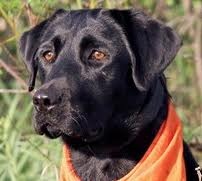<[wp_campaign_1]>
Trained canines could one day help to moderate the rate of death from lung cancer with the help of their keen sense of smell definitely. A study published in the European Respiratory Journal found that four dogs, two German shepherds, an Australian shepherd and a Labrador were 71 percent accurate in detecting lung cancer at an early stage.
German researchers at the hospital in samples from Germany Schillerhoehe breath collected from 220 volunteers, 110 healthy individuals, 60 with lung cancer and 50 with chronic obstructive pulmonary disease (COPD). The volunteers breathed into a tube filled with wool that has absorbed any fragrance available. After nine months of training, the dogs have learned to sniff the tubes and sit in front of the sample in which the odor of lung cancer were detected.
The researchers suggest that tumors produce volatile organic compounds (VOCs) that canines are capable of common sense, despite all the conflicting smells of tobacco, food or even of COPD. The only problem is that they were unable to determine which chemicals are the production of these distinct smells. Moreover, the fact that humans are incapable of VOC sense makes it more difficult for researchers to be exact to determine this.
Studies on the ability of dogs to detect cancer date back to 1989. Although the results were not always consistent, previous research has provided evidence for the early detection dog by the senses of several other cancers as well, including the bladder, colon, breast and skin .
Their help in the detection of lung cancer is enormous, given the challenges the doctors had to diagnose patients early enough to provide effective treatments. According to the U.S. Centers for Disease Control (CDC), more people die of lung cancer than any other cancer. This is largely because the symptoms of lung cancer are not just distinct enough to assume the risk of a patient. In fact, everyone is different and at least 25 percent of lung cancer patients do not even have recognizable symptoms.
If further research finds success in identifying the sources of VOCs such, doctors are hopeful that something like an “electronic nose” may be developed for use in hospitals. In turn, leading to higher rates of early detection, early treatment and ultimately, fatal accidents and less.
Dogs were used to sniff drugs, dead bodies, bombs and more for decades. Some breeds have more than 200 million olfactory receptors, which are responsible for detecting molecules of odor. Humans have only 5 million. Their capabilities are extremely valuable for science and medicine, to say the least.
The next step for researchers is to determine what and how these dogs are detecting and create a practical device that will also benefit of all humanity. You know what they say, a dog is the best friend of a man. In this case, they could very well be an important part of the rescue force of mankind
[wp_campaign_1]



